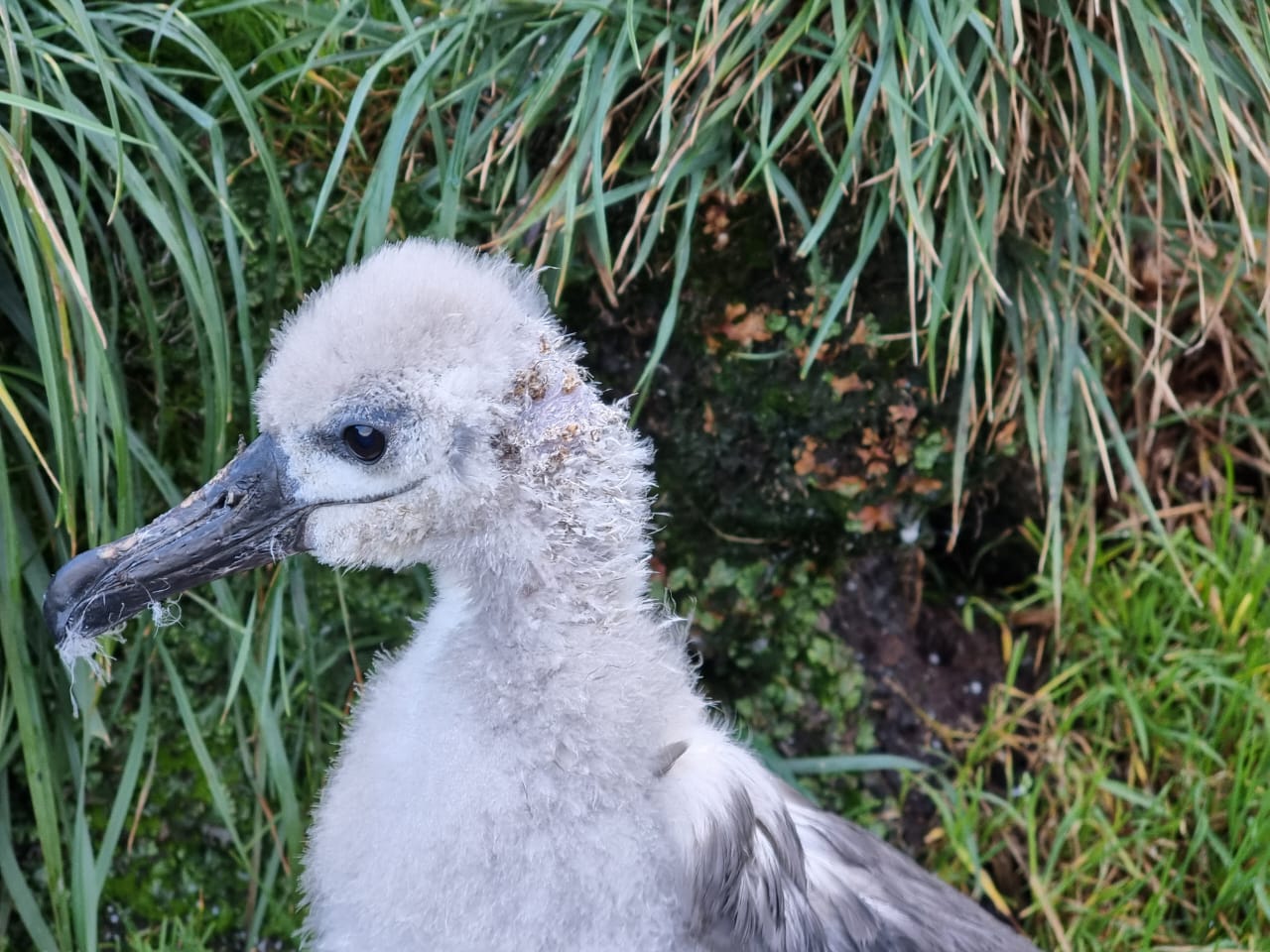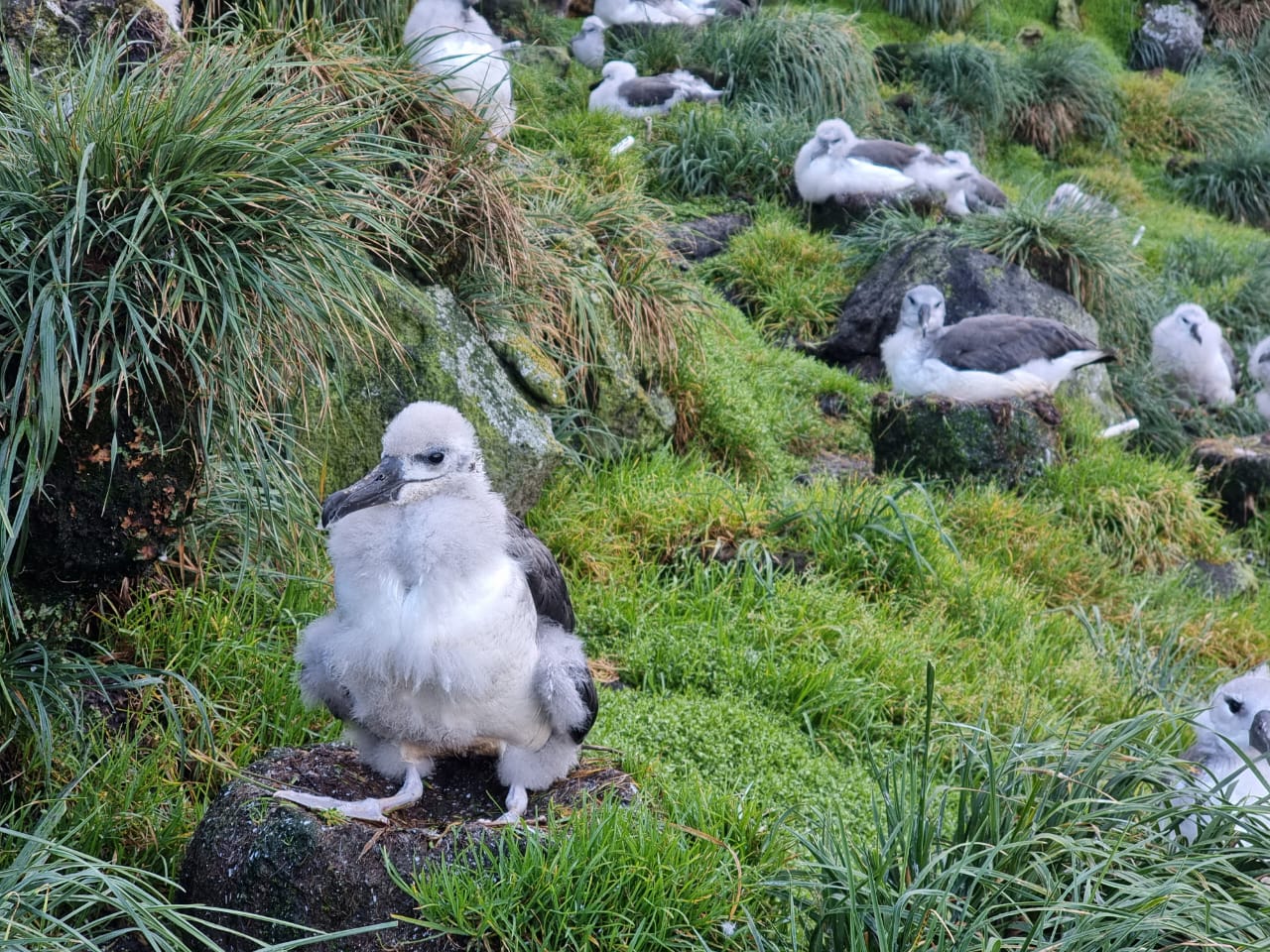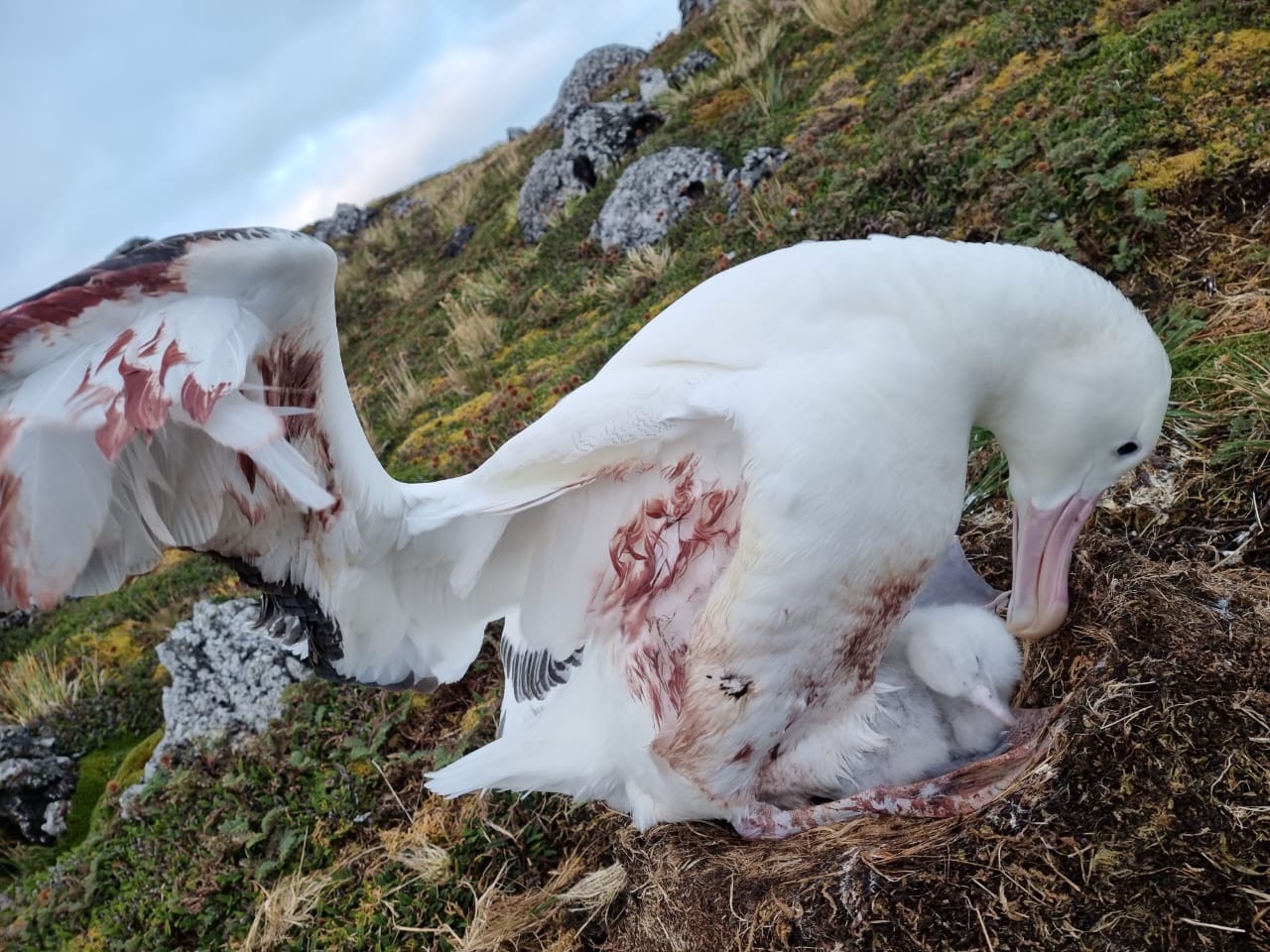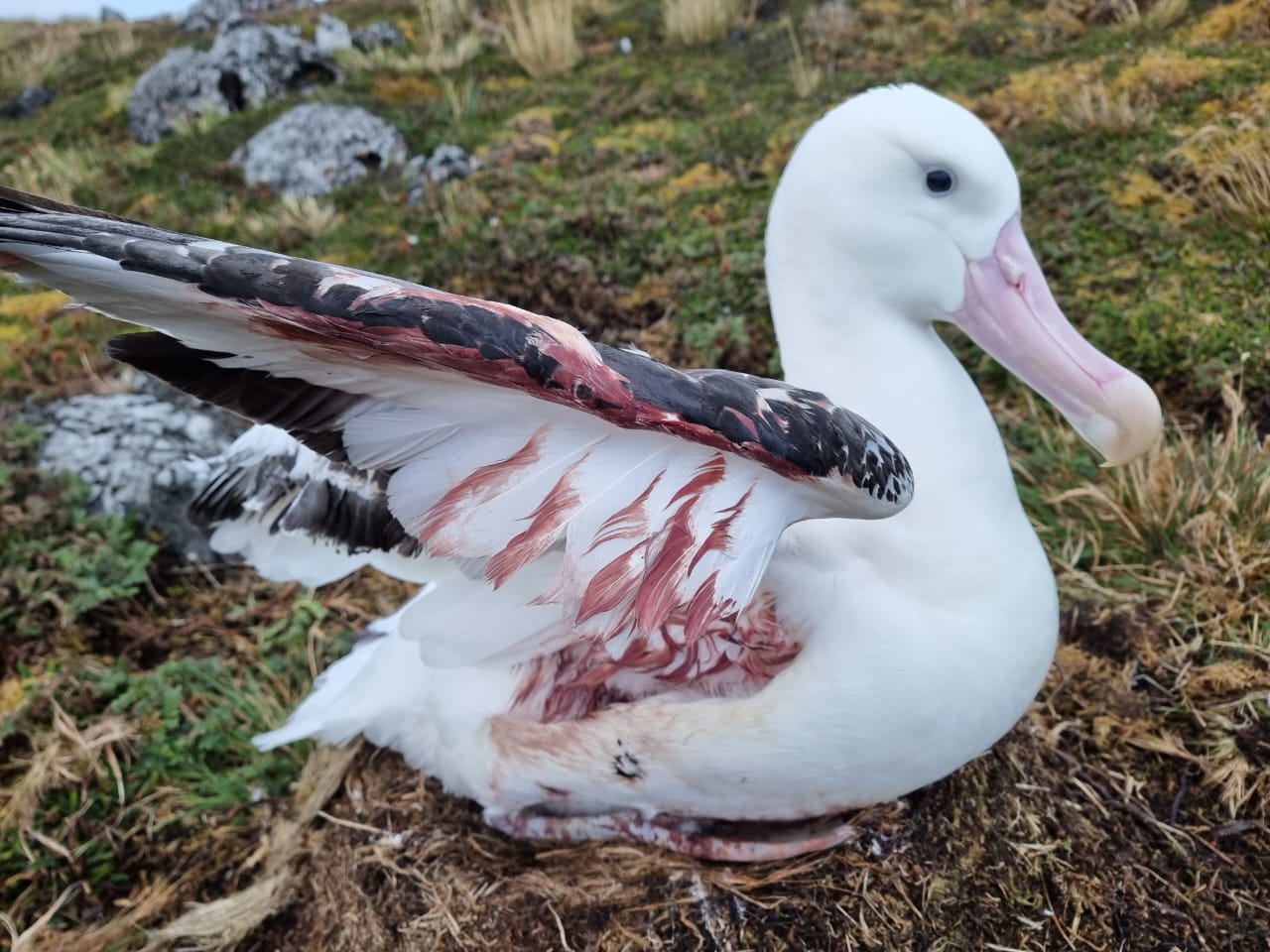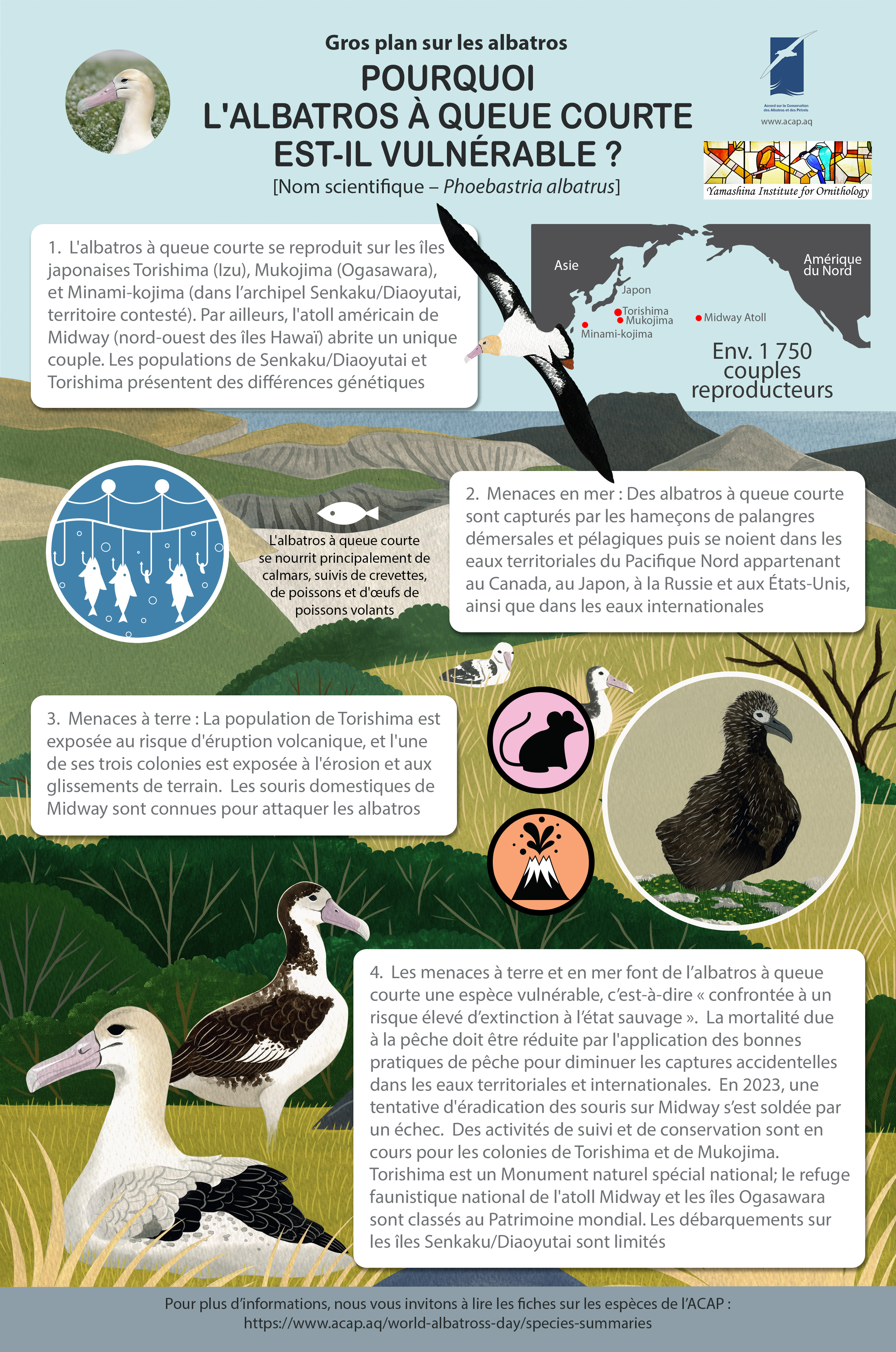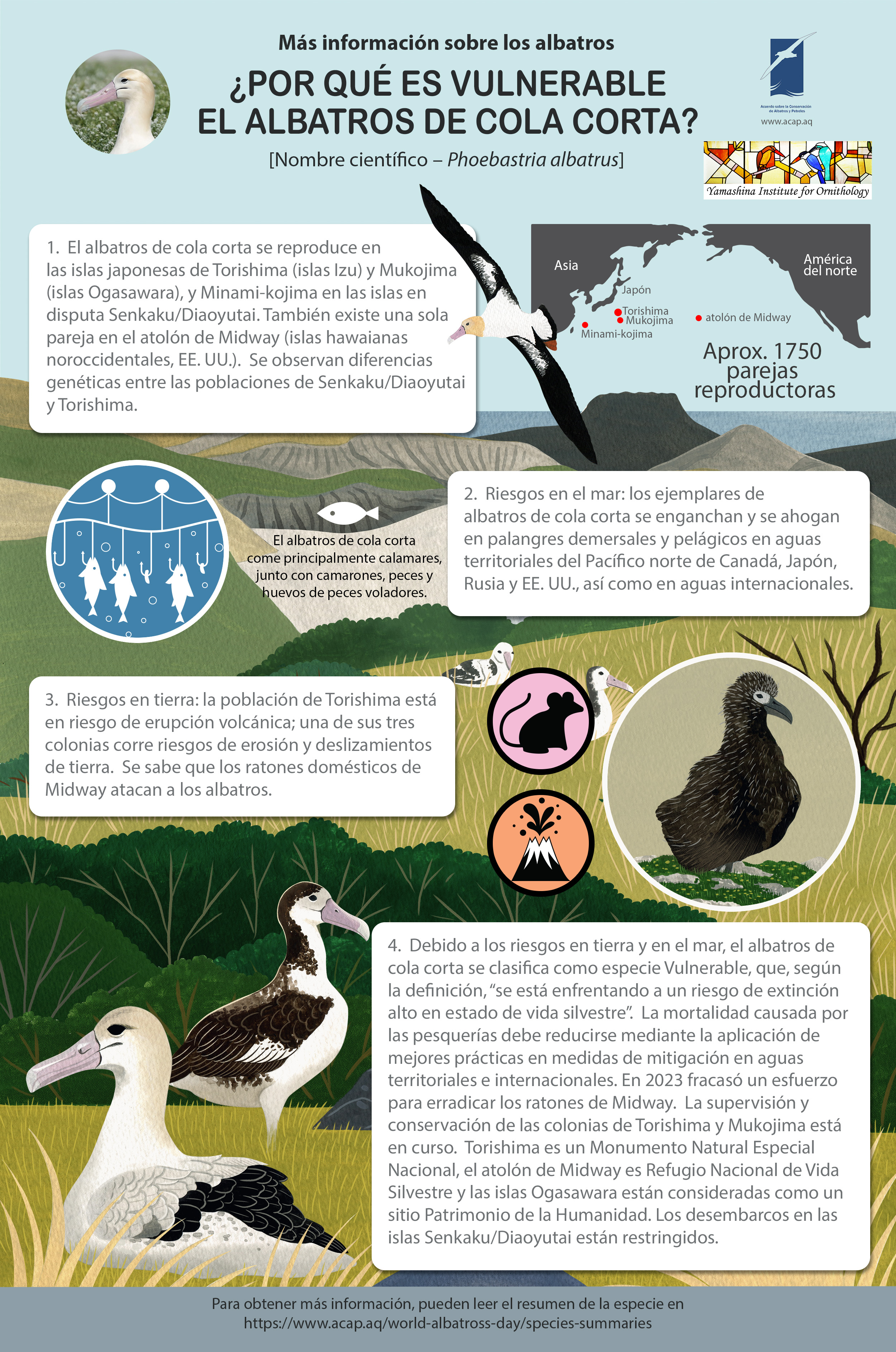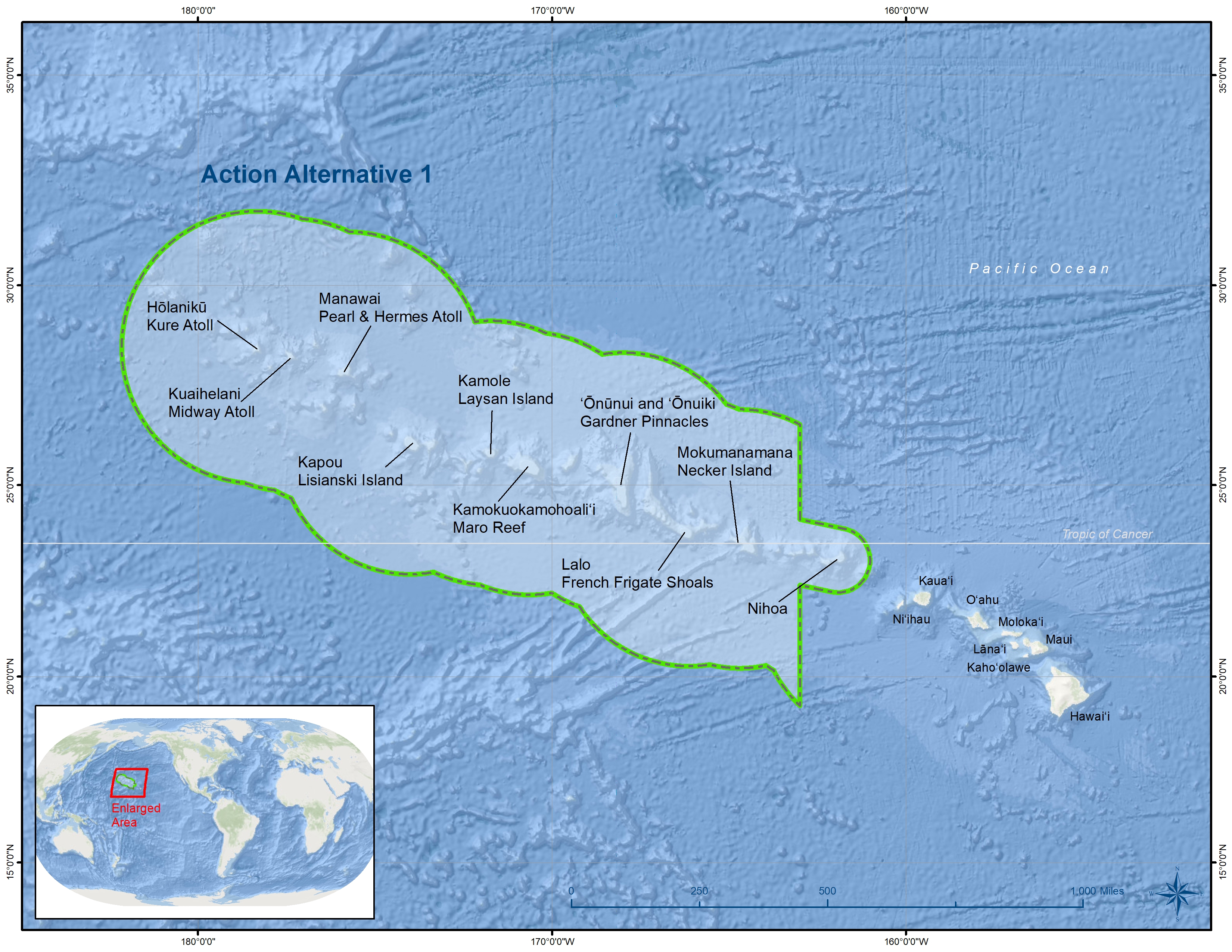
Proposed Papahānaumokuākea National Marine Sanctuary Agency, from NOAA
The Papahānaumokuākea Marine National Monument was proclaimed in June 2006 as the Northwestern Hawaiian Islands Marine National Monument. It was renamed as the Papahānaumokuākea Marine National Monument in 2007. The monument includes eight atolls in the North Pacific which support large breeding populations of Black-footed Phoebastria nigripes and Laysan P. immutabilis Albatrosses, and a single pair of Short-tailed Albatrosses P. albatrus. They are Kure, Midway, Pearl and Hermes Reef, Lisianski, Laysan, French Frigate Shoals, Necker and Nihoa. Seas out to 50 nautical miles (93 km) around each island are included within the monument.
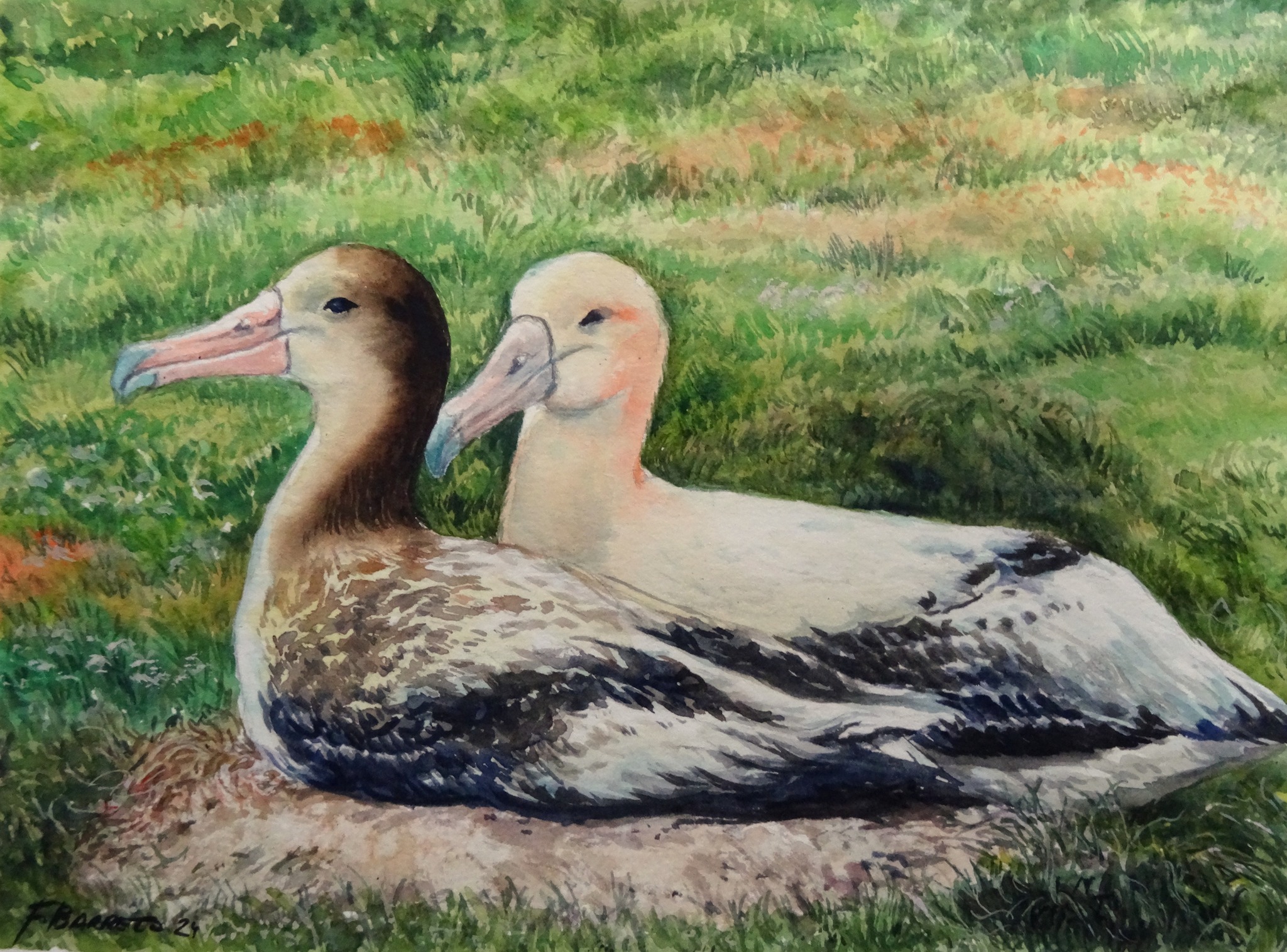
Short-tailed Albatrosses George and Geraldine on Sand Island, Midway Atoll. Artwork by Flávia Barreto of Artists & Biologists Unite for Nature (ABUN), after a photograph by Jonathon Plissner
The USA’s National Oceanic and Atmospheric Administration (NOAA) has now released for public comment documents for a proposed Papahānaumokuākea National Marine Sanctuary. “The proposed sanctuary would include the marine portions of the existing Papahānaumokuākea Marine National Monument and have an area of approximately 582 250 square miles (1508 000 km²). Papahānaumokuākea’s status as a marine national monument would not change under a sanctuary designation. The addition of a national marine sanctuary would provide regulatory and management tools to augment and strengthen existing protections for Papahānaumokuākea ecosystems, wildlife, and cultural and maritime heritage resources.” Access the draft environmental impact statement for the proposed new sanctuary. here and the Proposed Rule as listed in the USA’s Federal Register here. The proposal and these associated documents are being discussed in Hawaii at public meetings this month.
Papahānaumokuākea was inscribed as a mixed (natural and cultural) World Heritage Site in 2010.
“Marine Protected Areas – Safeguarding our Oceans”, is the theme for this year’s World Albatross Day (WAD2024), to be celebrated on 19 June 2024.
John Cooper, Emeritus Information Officer, Agreement on the Conservation of Albatrosses and Petrels, 16 April 2024

 English
English  Français
Français  Español
Español 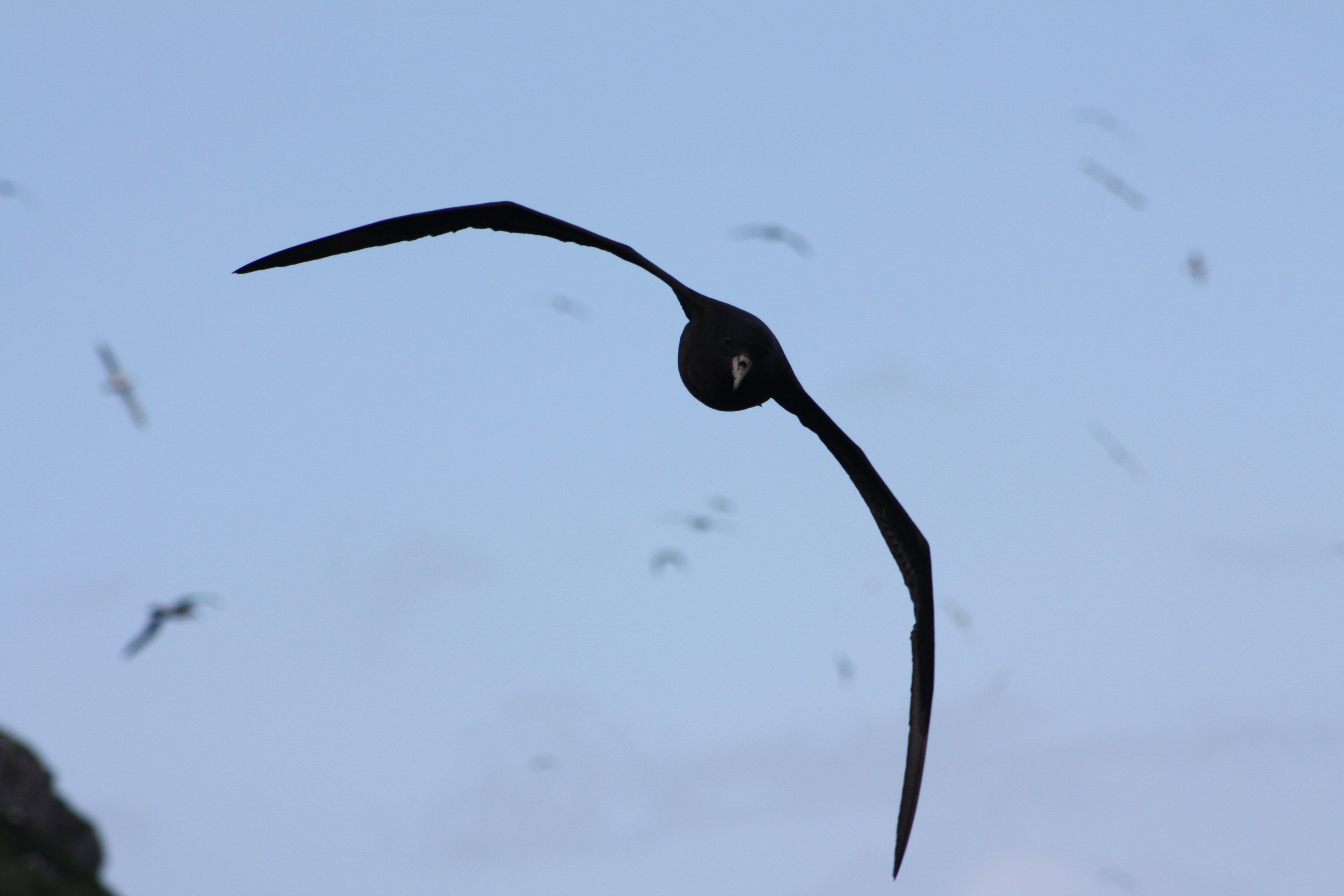 The silhouette of a White-chinned Petrel returning to its burrow at dusk; photograph by Kalinka Rexer-Huber
The silhouette of a White-chinned Petrel returning to its burrow at dusk; photograph by Kalinka Rexer-Huber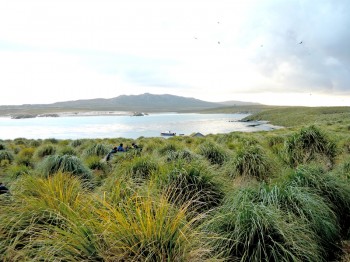 The tussoc-covered landscape of Kidney Island, where Sooty Shearwaters and White-chinned Petrels make their burrows; photograph by Sarah Crofts
The tussoc-covered landscape of Kidney Island, where Sooty Shearwaters and White-chinned Petrels make their burrows; photograph by Sarah Crofts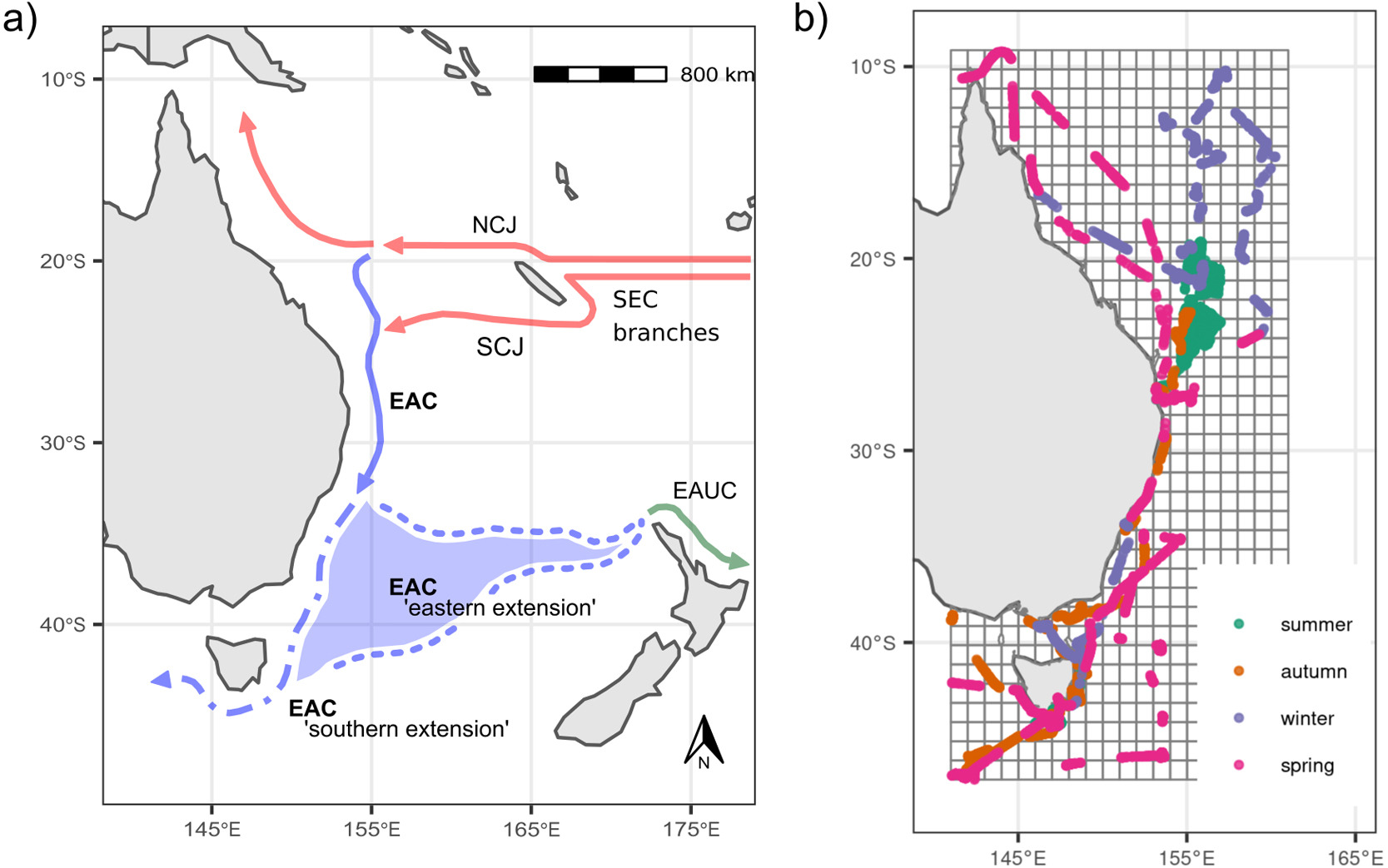 Figure 1 from the paper: Study area showing the main ocean currents (a), and seabird records made by season on top of the 1°latitude 1°longitude grid cells (b). In (a), the East Australian Current (EAC) system is highlighted with its acronyms in bold and drawn in blue. The South Equatorial Current (SEC) and its branches, the North Caledonian Jet (NCJ) and South Caledonian Jet (SCJ), are drawn in red. The EAC ’eastern extension’ is an eddy field (blue shaded area) often called the ’Tasman Front’, from which the East Auckland Current originates (EAUC, in green).
Figure 1 from the paper: Study area showing the main ocean currents (a), and seabird records made by season on top of the 1°latitude 1°longitude grid cells (b). In (a), the East Australian Current (EAC) system is highlighted with its acronyms in bold and drawn in blue. The South Equatorial Current (SEC) and its branches, the North Caledonian Jet (NCJ) and South Caledonian Jet (SCJ), are drawn in red. The EAC ’eastern extension’ is an eddy field (blue shaded area) often called the ’Tasman Front’, from which the East Auckland Current originates (EAUC, in green).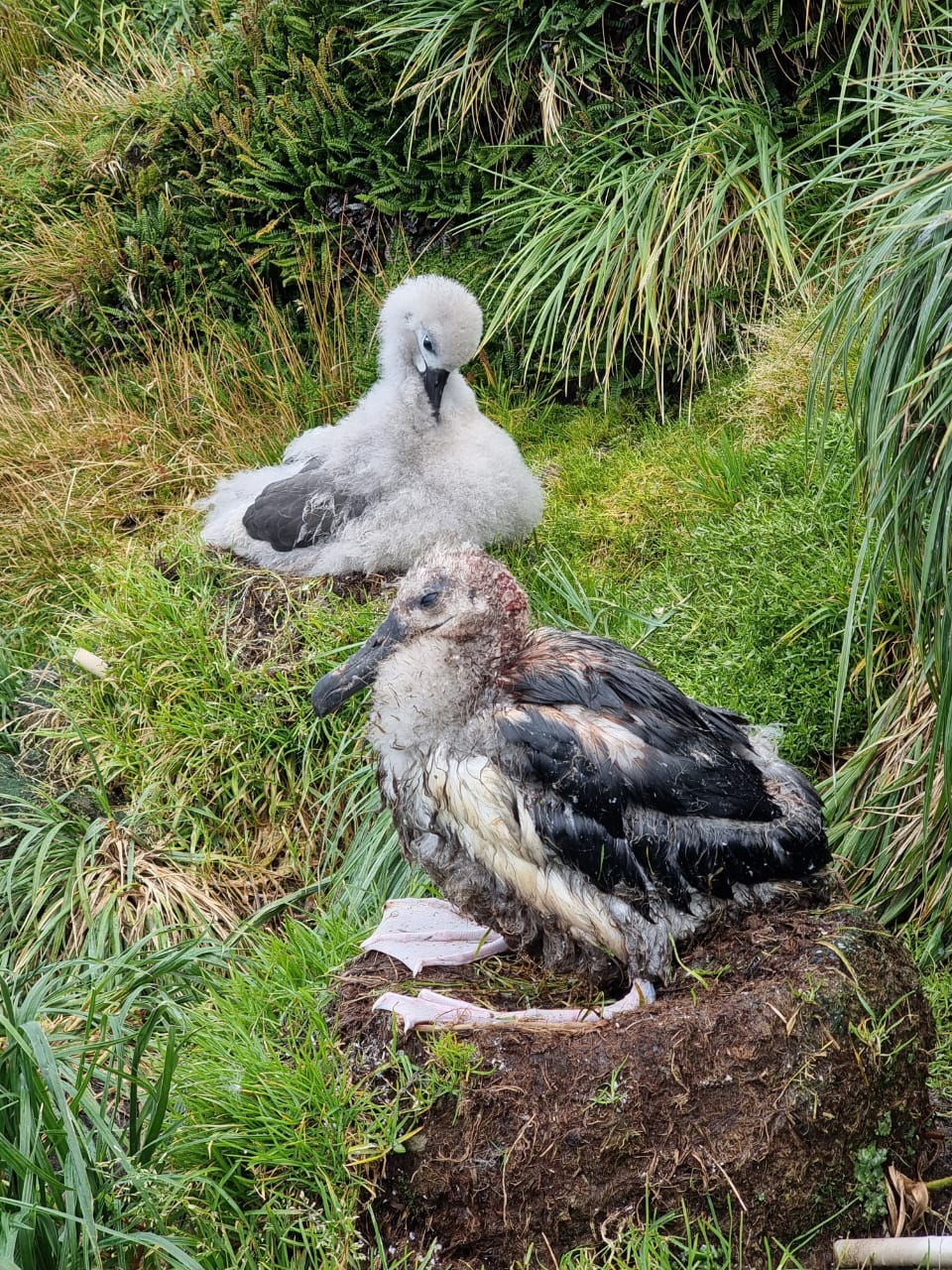 A badly wounded Grey-headed Albatross chick that will not survive the onslaught by Marion Island’s House Mice, 17 March 2024
A badly wounded Grey-headed Albatross chick that will not survive the onslaught by Marion Island’s House Mice, 17 March 2024